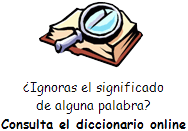Huge Device Aims to Capture
Pacific Ocean's Plastic Garbage
Engineers have launched a huge garbage collection device to gather
plastic material floating in the Pacific Ocean between California and
Hawaii.
The plastic makes up what is called the Great Pacific Garbage Patch. It
is the world’s largest spread of garbage, at two times the size of the
state of Texas.

The organization Ocean Cleanup created the collection device. The
group’s founder is Boyan Slat, a 24-year-old inventor from the
Netherlands.
Slat was just 16 years old when he was moved to clean up the oceans. He
had been on a scuba dive in the Mediterranean Sea and saw more plastic
bags than fish. The problem has only grown since.
“The plastic is really persistent and it doesn’t go away by itself and
the time to act is now,” Slat said.
He told the Associated Press that researchers with his organization have
found plastic from the 1960s and 1970s among the material in the Great
Pacific Garbage Patch. It contains an estimated 1.8 trillion pieces of
plastic in total. Most float on the surface of the water, or are within
a few meters of the surface.
Last Saturday, a ship pulling the pipe-shaped floating barrier left San
Francisco for the Garbage Patch. The barrier, called the floater, is 600
meters across. Attached to it is a screening skirt that hangs three
meters down in the water.
The screen is designed to collect the plastic as it moves through the
water. Sea animals can safely swim under the barrier.
The cleanup system also comes with lights powered by the sun, cameras,
and other special devices. Slat said this will make it so the system can
communicate its position at all times. That way a support ship can find
it every few months to remove the plastic it has collected.
Shipping containers will hold all the plastic gathered, including
bottles and fishing equipment. Slat said the containers are expected to
be back on land within a year. Then the plastic will be recycled.
Slat said he and his team will closely examine the system’s use of time
and energy. They will also study how it performs in severe ocean
conditions, including huge waves.
“We still have to prove the technology,” he said.
The Ocean Cleanup has received $35 million in donations to pay for the
project, including from the heads of companies likeSalesforce.com and
PayPal. The organization hopes to launch 60 free-floating barriers in
the Pacific Ocean by 2020.
“One of our goals is to remove 50 percent of the Great Pacific Garbage
Patch in five years,” Slat said.
The free-floating barriers are made to survive extreme weather
conditions and damage from continual use. They will stay in the water
for twenty years and in that time collect 90 percent of the garbage in
the patch, Slat added.
George Leonard is the chief scientist of the Ocean Conservancy, a
nonprofit environmental activist group. He expressed concern about the
cleaning project. He said even if plastic garbage can be taken out of
the oceans, more continues to enter the water each year.
“We at the Ocean Conservancy are highly skeptical but we hope it works,”
he said. “The ocean needs all the help it can get.”
Leonard said 8 million metric tons of plastic waste enter the ocean
yearly. He said a solution to the problem must include preventing
plastic from reaching the ocean. He said more education is need so
people reduce the use of single use plastic containers and bottles.
Leonard said his group will hold its yearly International Coastal
Cleanup on September 15. About 1 million volunteers around the world
will collect garbage from beaches and waterways. Last year, the Ocean
Conservancy volunteers collected about 9,000 metric tons of plastic
worldwide in about two hours, he said.
Leonard also raised concerns that animals might be captured by the net
that will hang below the surface.
But, Boyan Slat said he does not think that will happen. The system will
act as a “big boat that stands still in the water,” with nothing for sea
creatures to get caught in, Slat said. But a boat carrying experienced
marine biologists will also be launched to make sure the device is not
harming wildlife.
“I’m the first to acknowledge this has never done before and that it is
important to collect plastic on land and close the taps on plastic
entering into the ocean, but I also think humanity can do more than one
thing at a time to tackle this problem,” Slat said. |
![]() ).
Utiliza el botón derecho del ratón y "guardar enlace" para descargar el
fichero a tu PC, tablet, Smartphone, etc.
).
Utiliza el botón derecho del ratón y "guardar enlace" para descargar el
fichero a tu PC, tablet, Smartphone, etc.![]() Escucha el audio
Escucha el audio



